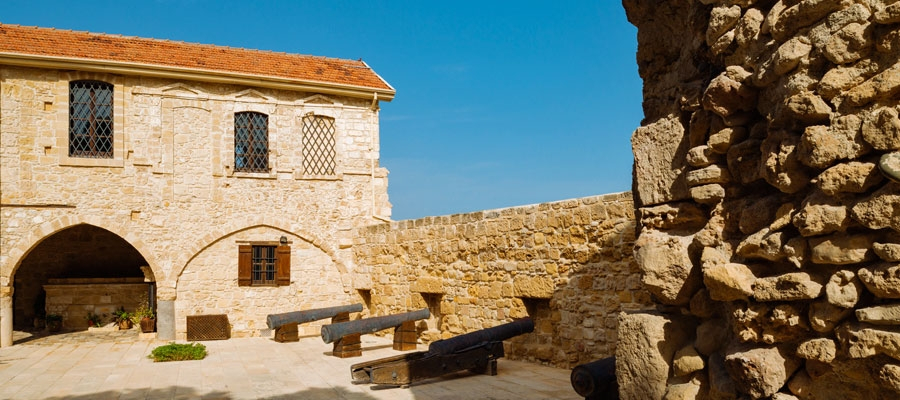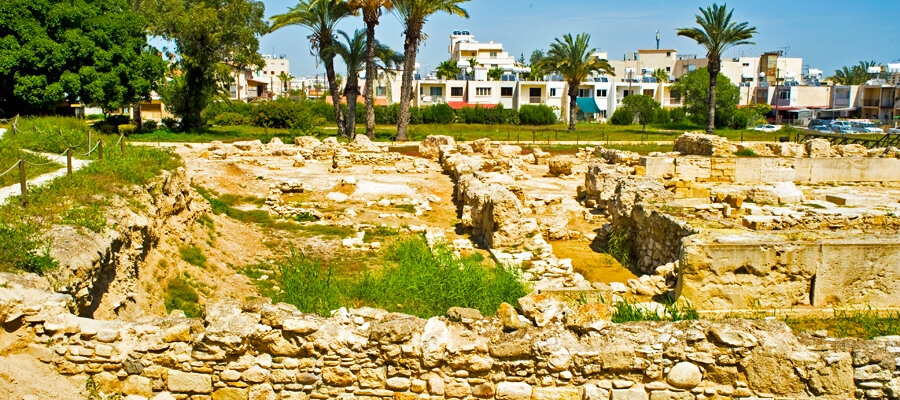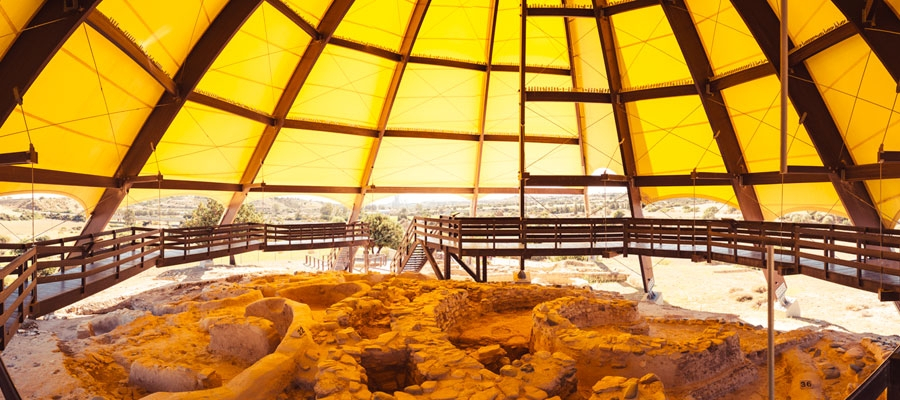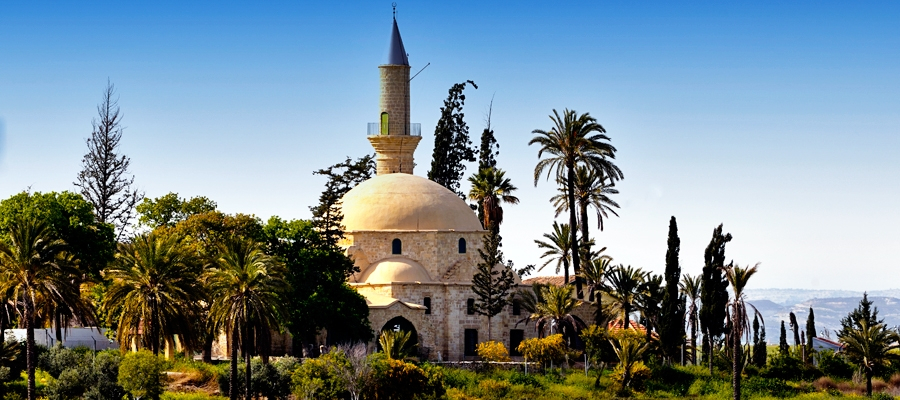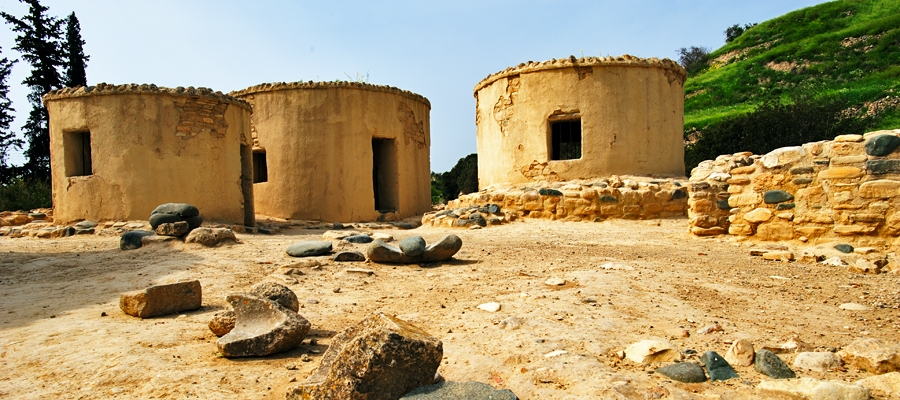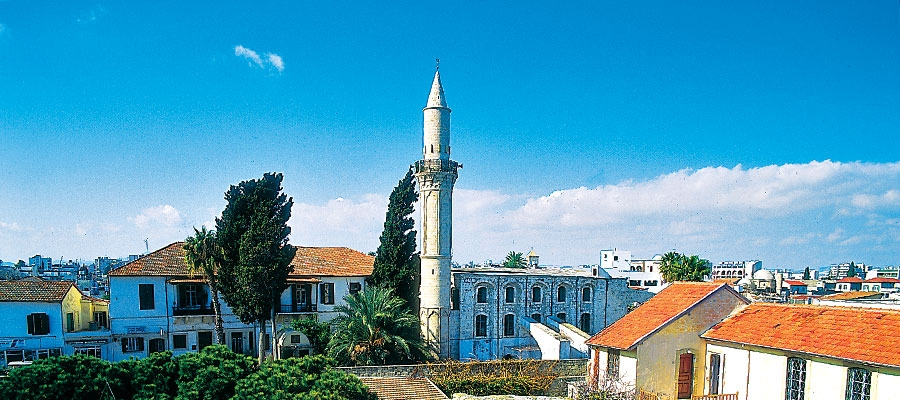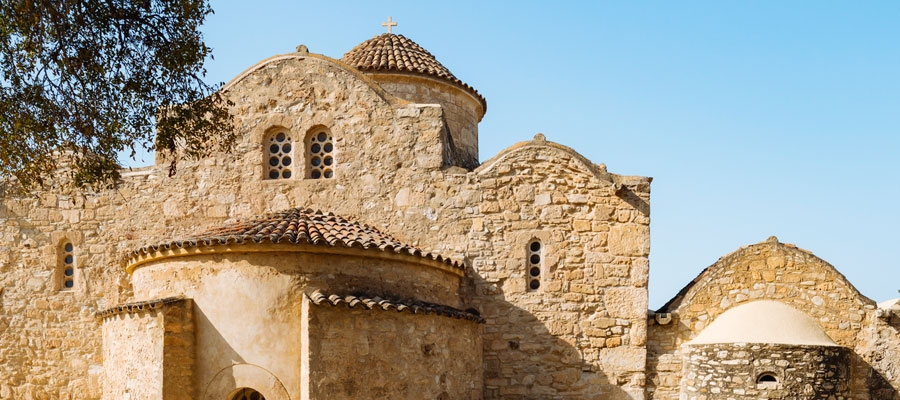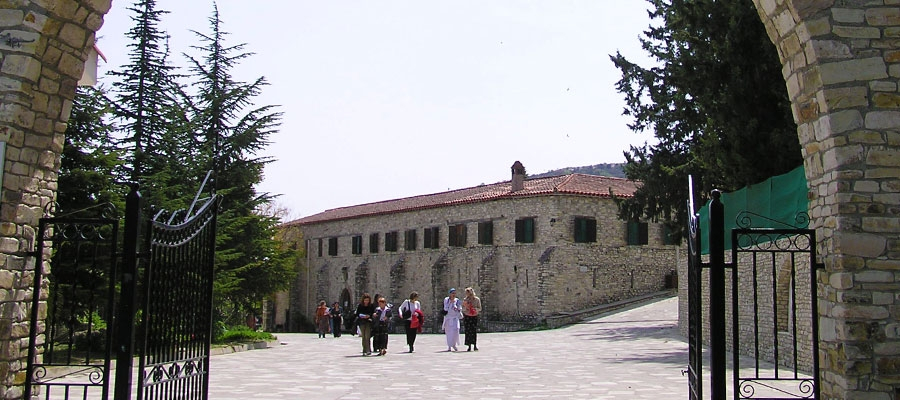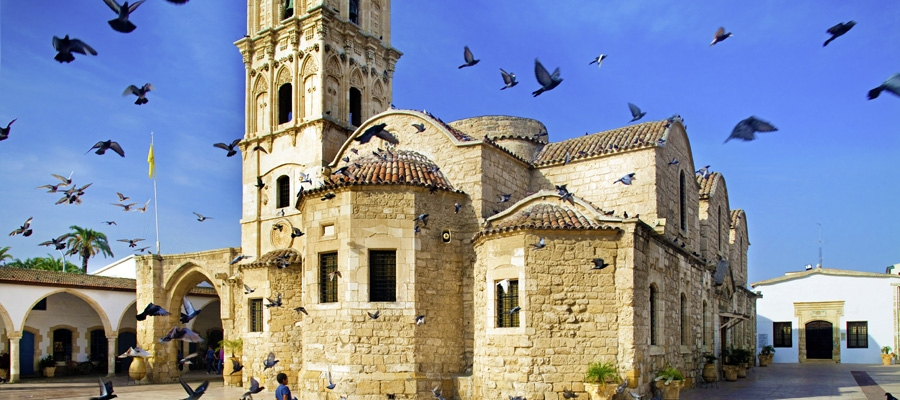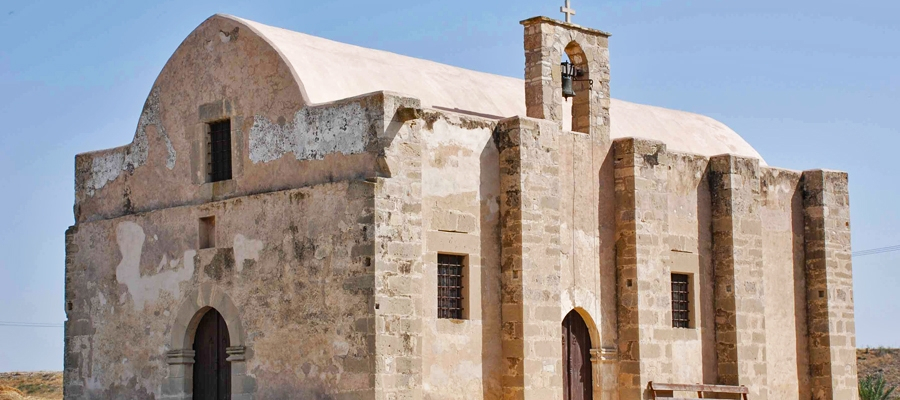Located at the end of the Foinikoudes promenade, the Medieval Castle of Larnaka (Larnaca) (also referred to as Larnaka Fort) is believed to have been originally built during the Middle Ages, and took its present form during the Ottoman rule, although there is some contestation of its origins.
Chronographer Florius Boustronius dates it to the years of Lusignan King James I (1382 – 1398 AD), who built it to protect the harbour of the town. During the same time, the Genovese occupied Famagusta (Ammochostos) and the Lusignans had to develop another major port for the needs of their kingdom. Sources from the 18th century insist that the castle was built by the Turks in 1625 AD, even though a Turkish garrison was stationed there since 1570 AD. Other references by travellers confirm that the castle was constructed before 1625.
After the end of the Ottoman era in Cyprus, the British converted it into a prison and it was used during the first years of their rule. The western chamber of the ground floor in the east was used for the execution of prisoners. The gallows – which must had been constructed in the room – were in use until 1948.
Today, the castle houses the small Larnaka Medieval Museum across three rooms, and exhibits artefacts from the Early Christian period (4th-7th centuries) to the Ottoman period (18th-19th century).
| Region: | Larnaka |
| Address: | Leoforos Athinon |
| Contact No: | Tel: +357 24 304 576 |
| Operating Hours: |
September 16 – April 15, Monday – Friday: 08:00 – 17:00 Saturday and Sunday: 09:30 – 17.00 April 16 – September 15, Monday – Friday: 08:00 – 19:30 Saturday and Sunday: 09:30 – 19.30 |
| Operating Period: |
All year round. Closed on Public Holidays. |
| Entrance Fee: |
€2,50 For organised groups consisting of more than 10 persons there is a 20% reduction on the entry fees. The Department of Antiquities can issue special entry cards for all its museums and ancient monuments: One (1) day entry cards – €8,50, three (3) day entry cards – €17,00, seven (7) day entry cards – €25,00. Pensioners €1,25 |
| Website: | www.mcw.gov.cy/da |
| Opening and closing times as well as entrance fees, are subject to alterations without notice. Visitors are advised to check before visiting. |

